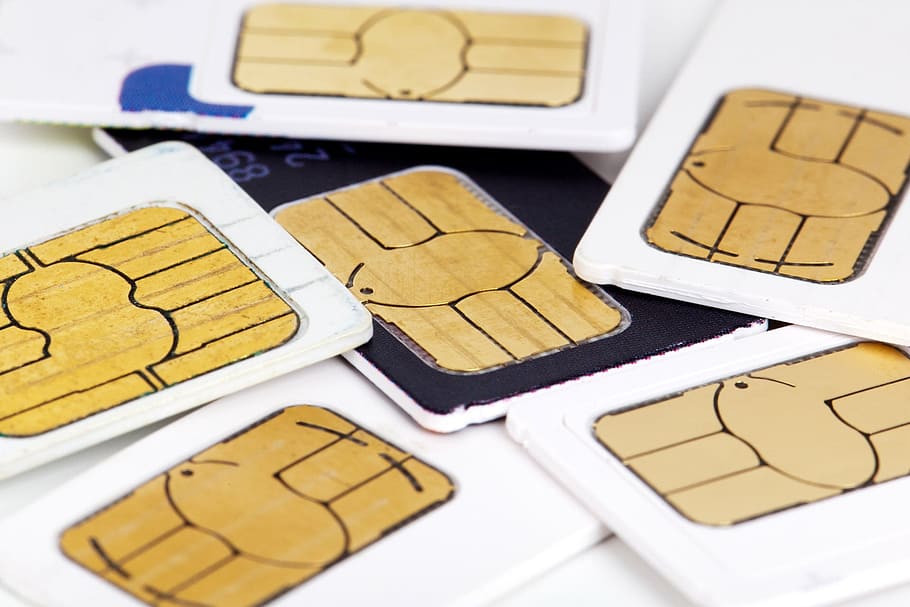
The rise of the eSIM card certainly has a lot of people wondering what this new technology is going to mean for wireless services. eSIM technology certainly has the potential to open up the wireless service realm in a way that we potentially never thought possible. The biggest problem that we’re seeing though is that wireless service companies aren’t exactly keen to have a true world wide wireless service network that everyone can access. Does this mean then that eSIM technology is just a novelty? In the battle of eSIM vs physical SIM the only real difference is the lack of an actual card? We’re going to be diving deep into this debate. This is actually the second time that we tackle it on the site.
We felt though that this battle deserved an updated version. Mainly because all indicators point to the fact that eSIM technology is inevitable. However, the take over hasn’t gone over as quickly as we may have expected. That may have something to do with the fact that the technology gap that exists between developed, and underdeveloped countries is widening. This has put cell phone manufacturing companies in an awkward position. They have to invest in the development of new technology. While making sure that they continue to churn out phones that are compatible with older networks. This is an effort to not let go of the market in emerging countries. Here are the topics that we’re going to be covering in this article.
- eSIM vs Physical SIM – The Differences Between The Two
- eSIM vs Physical SIM – Which Is Safer?
- Why eSIM Technology Hasn’t Expanded More
- How Long Will Regular SIM Cards Continue To Exist?
- Are There Still Benefits To Owning A Regular SIM Card?
- What’s The Best Option For You As A Consumer?
eSIM vs Physical SIM – The Differences Between The Two
What are the real differences between the two? The obvious one that we can point to in this battle of eSIM vs Physical SIM is the fact that one is an actual card that you have to insert into the phone. The other is just a QR code that you’re going to scan. Well, when it comes to an eSIM the concept is a little bit more difficult. It’s essentially like that QR code is granting you access to information that is behind a paywall on an app. We can go really deep into the rabbit hole in that difference. For practical purposes though it doesn’t make a lot of sense.
The other main difference that existed, and that could and probably has fallen by the wayside by the time that you’re reading this is the storage capacity. For real early versions of mobile phones the SIM card essentially doubled down as the link between the device and the phone company. While also serving as a storage unit for the device. That’s why you can still choose to save your contacts on the SIM card. eSIM cards didn’t originally feature this option. At this point though, having the capability to create a contact list in a cloud somewhere is rather easy. Those are still the two main practical differences. Of course, there’s a ton more that aren’t all that relevant.
eSIM vs Physical SIM – Which Is Safer?

Photo by Saksham Choudhary on Pexels.com
If there are people out there that are reluctant to go digital this is the sword that they are going to die on. The idea that an eSIM is more “hackable” than a regular SIM card. The thought process is that you would have to physically access the phone to be able to tamper with a physical SIM card. Whereas an eSIM could be hacked through an outside source from a remote location. In theory that may sound accurate to some people, but the fact is corrupting a regular SIM card could also be done from outside source, or downloading spyware onto the phone. There’s actually an argument to be made that digital sources can be equipped with better safety measures than the old trusty SIM card.
Our two cents when it comes to safety would be to advise folks to be very careful about the sites that they are visiting, and what they are downloading regardless of the type of SIM option that they have active on their phone. Cyber attacks are certainly a possibility and we are not minimizing them. That being said, most of them involve voluntary action by the cell phone users. That’s not to say you wanted to get hacked, but you opened a fraudulent email or downloaded shady software to the device and that did the trick. The bottom line is in this confrontation between eSIM vs Physical SIM both are hackable. Yet, in both cases you can actively take steps to prevent these attacks.
Why eSIM Technology Hasn’t Expanded More?
At this point with eSIM technology being available, why hasn’t it completely taken over the cell phone market? We actually do feel that there has been a take over if you will. It’s just that eSIM technology is making cell phone manufacturers expand their capabilities in a way that they potentially had never experienced. The thing is, part of the world is currently running at the very least testing if not full implementation of 6G networks. At the same time other parts of the world are not even capable of producing a nationwide 4G network that is reliable. Certainly the newer versions of phones that are on the market today are compatible with both eSIM technology and regular SIM cards. How long will this trend continue?
Compatibility and cost-benefit issues are going to show up on the radar of these companies in the coming years. To be more specific they are potentially seeing them grow and develop as you’re reading this. It’s like these companies are having to produce PlayStation 5’s and Play Station 2’s simultaneously. The gap between wireless networks in different parts of the world as we mentioned is widening. The real problem for this industry and others is that there is currently a shortage of supplies to be able to even produce mothers boards, and all sorts of technical equipment. That supply shortage can also slow down the digital take over. As can this tech gap that we’re seeing expand.
How Long Will Regular SIM Cards Continue To Exist?

At this point it’s anyone’s guess. From the looks of things though there are a couple of ways that this can go. The big problem that we see is the one that we’ve essentially been referencing the whole time. There are countries across the world that are falling behind big time when it comes to wireless technology. What we could see with newer phones is essentially 3G and 4G compatible eSIM cards. If the phone manufacturers don’t want to keep making older models. We are not even sure if this is fully possible. There are massive markets though like India that are just teasing a 5G network launch. A 2022 release date will literally put them behind certain countries a complete generation.
There are a lot of countries in the world that are not at even the halfway point of implementing their 4G national network. We are not saying that it’s not a possibility that certain devices will have access to different types of networks. You have to believe though that at some point making devices compatible with older networks is going to be detrimental to the advancement of technology. Still with all of that in mind we can continue to see regular SIM cards in certain parts of the world for the next decade or so. We would be very surprised if these regular SIM cards went 100% extinct in the next 10 years. That doesn’t mean you’ll see them everywhere, but they’ll still be around.
Are There Still Benefits To Owning A Regular SIM Card?
We could say that there are certainly advantages to having a phone with a regular SIM card port. This advantage may continue to extend in a sense. As certain countries go 100% digital, and others stay behind. What will happen is that folks that have a phone with a regular SIM card port are going to be able to get access to local networks all over the world. If certain phones start dropping their regular SIM card ports they are not going to be able to be sold in certain parts of the world. When you potentially travel to these countries with one of these phones you are going to be at a disadvantage.
Now, does having a regular SIM card hold benefits over using an eSIM? We have to believe that the answer even at this point is no. We talked about the fact that you could hold your contacts and certain information on a SIM card. These days that amount of data or data size is something that you can do on the free version of any cloud app. There are mobile game apps that have a higher data storage capacity than a regular SIM card. It’s like trying to say that there’s a benefit to having a CD over data in the cloud. You could play the privacy card. If you remove the SIM card the data is not going to be at a risk of being hacked. That’s the only thing we could come up with.
What’s The Best Option For You As A Consumer?

Right now the answer to this question could depend on where you live, and what type of phone you have. You could make the argument that it’s not worth it to invest in a new phone at this point just to be able to have access to an eSIM card. As you inevitably keep upgrading your device because your current phone will become incompatible with the network of the day, we have to believe that everyone is going to make the jump to an eSIM card. It certainly seems to be the way that the market is headed. As we mentioned in the previous paragraph it’s like making the argument that you’d rather use a CD than have music saved digitally in a streaming service.
If the debate was over sensitive data or things like that, then we could have a conversation. To were keeping very sensitive data safe through external storage can be your best option. That’s certainly the case. With current SIM cards though the data that the card itself stores these days really doesn’t contain sensitive information. It’s just the link between your device and your wireless service company. We understand that there may be people out there that are still on the fence about going fully digital. At the end of the day though it’s going to be one of those adapt or die scenarios.
eSIM vs Physical SIM
Telecommunications are going to go digital whether we like it or not. However, there is a sense that the transition period is going to take a whole lot longer in certain parts of the world. There are countries in Africa for example where cell coverage is basically in its infancy. The worst case scenario is that there might come a point where companies stop producing the technology that they are on. These countries tend to be really poor so it’s not like they are going to be able to magically update. It’s not often that we talk about altruistic causes on this site. The tech gap though can lead to a ton of different issues. It is something that needs to be addressed.
As far as being scared about the eSIM takeover, and picking the regular SIM side in the eSIM vs Physical SIM battle, it’s going to lead you nowhere. That’s the path that technology is taking. The cyber security element of things is certainly one to consider. However, we could say that with things going fully digital and in the cloud you’ll have more tangible resources to be able to improve your data safety. Should you be actively looking to switch to an eSIM? Chances are you will switch the next time that you upgrade your phone. So you may not even have a ton of say in the matter.